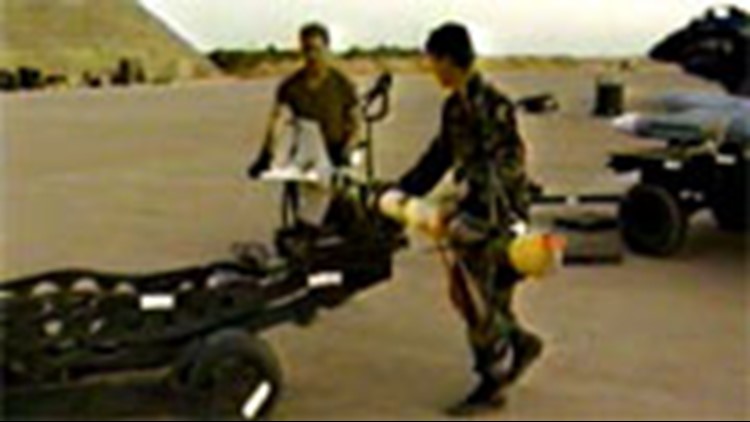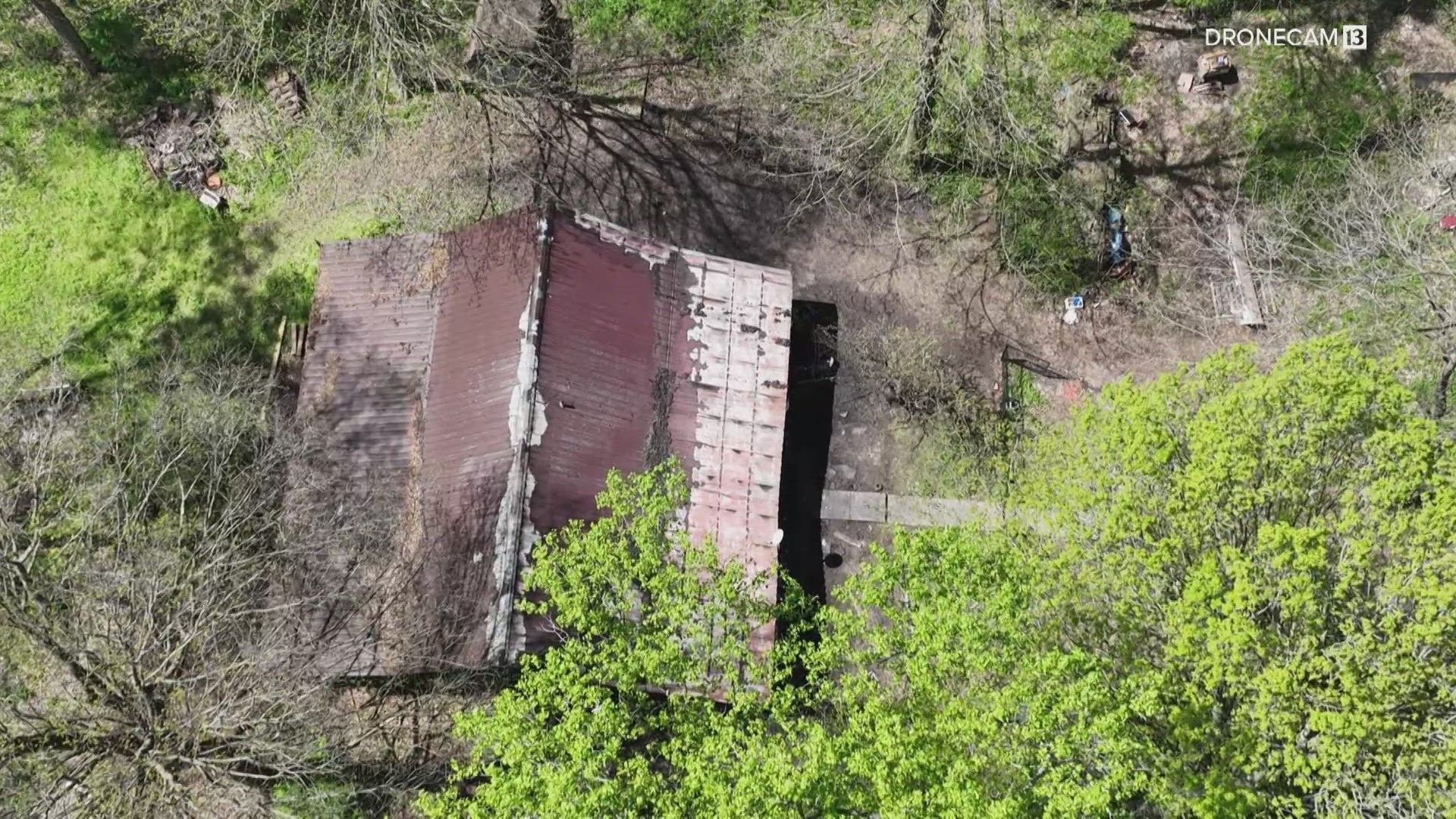Sandra Chapman/13 Investigates
Indianapolis - Their contributions have gone unrecognized, despite top secret missions and battle time service. Now, sick and dying, these men and women are being refused Veterans Affairs benefits because of a military technicality.
Prepping for the "sandbox," Air Force Reservists ready a C141 transport plane for a mission to the Persian Gulf. They are responsible for transporting precious cargo into war zones, both troops and their loaded equipment.
In January 1991, they helped drop 500,000 US troops into the desert to take Iraqi forces by storm.
Lt. Colonel Steve Avery of Indianapolis was one of their pilots.
"My crew was one of the first in Desert Storm. We flew a special elite group in and air dropped them during the beginning of the war," Avery explained.
He and fellow crew members from the 707th Air Squadron out of Charleston, South Carolina, also shuttled out scud missiles, spent nuclear tank shells covered in uranium dust, and who knows what else?
They were trusted with critical roles under the 315th Air Lift Wing, even though their reserve unit was not technically "activated."
Chief Master Sgt. Bob Strobel was the personnel superintendent at the time.
"These people flew into the sandbox. They were carrying all kinds of things. Probably a lot of the things they did were classified, and they cannot even by law talk about some of their missions," Stobel told 13 Investigates outside of the Charleston Air Base.
They were dying to serve. Literally.
Surviving crew members now say their bodies are ravaged from exposure to deadly toxins. Worse yet, the VA is refusing to cover the cost of their care. Despite honors, the government won't even acknowledge their service.
"They don't want to give me any credit for being in the war zone, and they don't want anything to be related to an injury or exposure during war because they would have to pay me more money," Avery alleged.
"We have a volunteer military that is not being taken care of on a timely basis," added his wife, Mary Ann.
Colonel Avery's ALS-like symptoms began three years ago. The disabled combat vet considers himself lucky. He's still alive, despite mounting post-war casualties.
Of the 160 members of his unit, almost a third are dead or terminally ill. He's created a medical registry to keep track of his squadron and a neighboring medical unit.
"Twenty-five people in my squadron are now passed away and 25 are terminally ill or stabilized. They came down with brain tumors, brain cancer, leukemia and ALS," said Avery referring to the medical registry he has compiled.
In September 2008, the VA said it would cover ALS, or Lou Gerig's disease for any veteran with 90-days or more continuous active service.
A national study found the risk of the disease two times higher for Gulf War vets.
The government also agreed to cover different forms of cancer for these troops. But not for Avery's squadron, who served with little documentation.
"It took them a year to find my records," the 63 year old told 13 Investigates. "It's been a pretty ugly exercise trying to substantiate everything," he said, with the help of the Pentagon.
13 Investigates took the issue to Indiana Congressman Steve Buyer, the top ranking Republican on the House Committee on Veterans Affairs.
"Wow," said Buyer after 13 Investigates described the complaint. The 4th District Congressman said it was the first he had heard of it, even though Avery and his wife say they called his offices in Monticello and Washington.
"I just want to let you know, I'm not going to challenge what somebody has told you. But generally, I have been the advocate for a lot of different groups with Gulf War Veterans in particular because they were exposed to many different environmental factors in that war," Buyer said.
Buyer wrote a letter to Eric Shinseki, Veterans Affairs secretary, asking him to look into the matter.
Dangerous insecticide?
That exposure to chemicals includes a potent insecticide. High concentrations of the roach spray with D-phenothrin were specially packaged for the Department of Defense.
13 Investigates obtained a can similar to the one the United States Agriculture Department required Desert Storm vets to use to keep cargo pest-free. Manufacturers warned the ingredients were "hazardous to humans."
"Once we took off they used to spray the whole plane down with 4 or 5 cans of bug spray. As the pilot you could be up in the cockpit and look in the back of the airplane and you couldn't see the passengers because there was so much bug spray," recalled Avery.
13 Investigates has uncovered, federal documents showing the crews were carelessly exposed during that ritual.
The label says, "Harmful if swallowed or absorbed through the skin. Avoid breathing vapors," yet the directions called for "Spraying...when passengers and crew are onboard and all doors, hatches, and ventilation openings are closed."
By the time the EPA discovered the flaw and demanded new labeling, it was well after the war.



